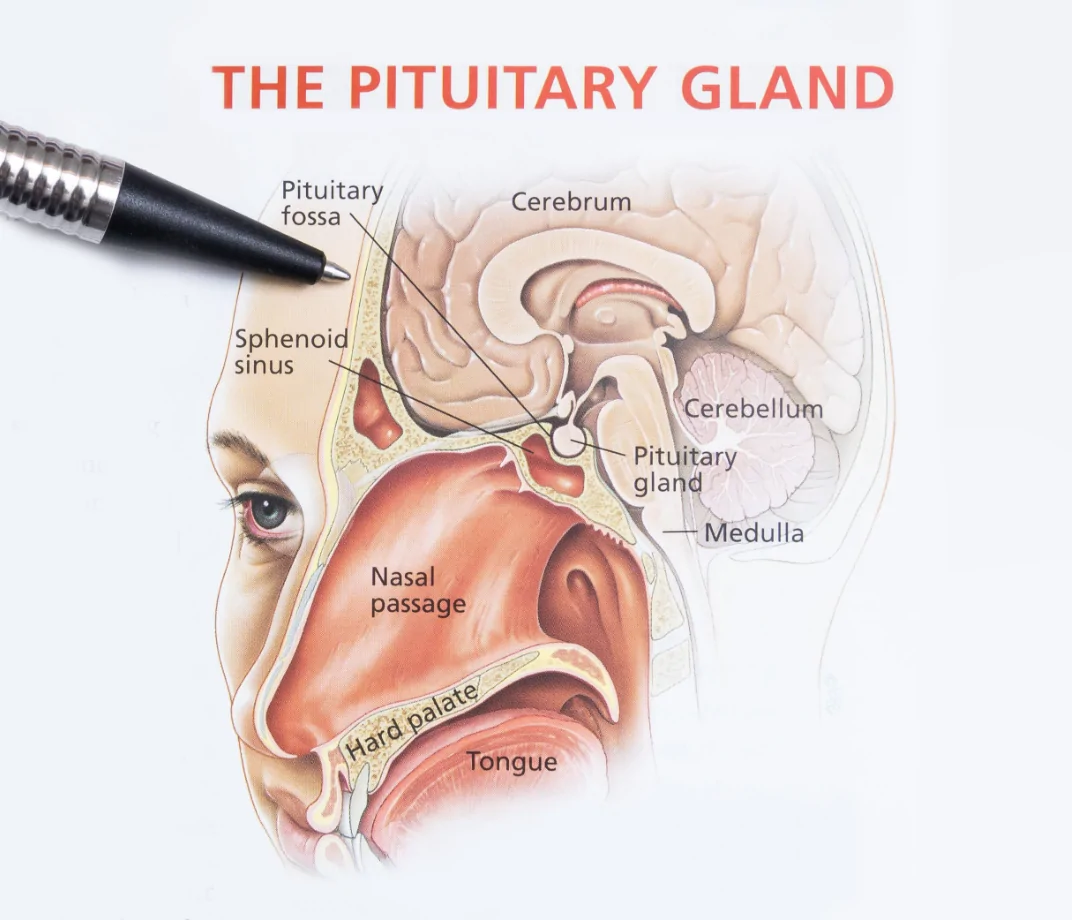
The pituitary gland is a small structure, about the size of pea, located in the middle of the head just under the brain to which it is attached by the pituitary stalk. For its size, it has an impressive array of important endocrine (hormonal) functions.
It secretes a large number of hormones into the blood which in turn control numerous important body functions.
Oxytocin and antidiuretic hormone (ADH) are also released by the pituitary gland. However, these are produced by another region of the brain called the hypothalamus, travel through the pituitary stalk and are released by the posterior pituitary gland. They are not produced by pituitary adenomas.


Following surgery patients are closely monitored during their hospital stay for any problems such as CSF leakage or hormone dysfunction. Patients are normally given a steroid medication which is then gradually weaned. Further tests of hormone function and, in particular, cortisol production, are performed. An MRI is also normally performed prior to discharge.
A follow-up appointment is scheduled with Prof Owler 6 weeks after surgery. Follow-up appointments are normally also made for review by the ENT surgeon and endocrinologist.
In the long term, MRI scans are repeated on a regular basis. These are reviewed with Prof Owler normally on an annual basis. Regular endocrine reviews are also usually scheduled.
